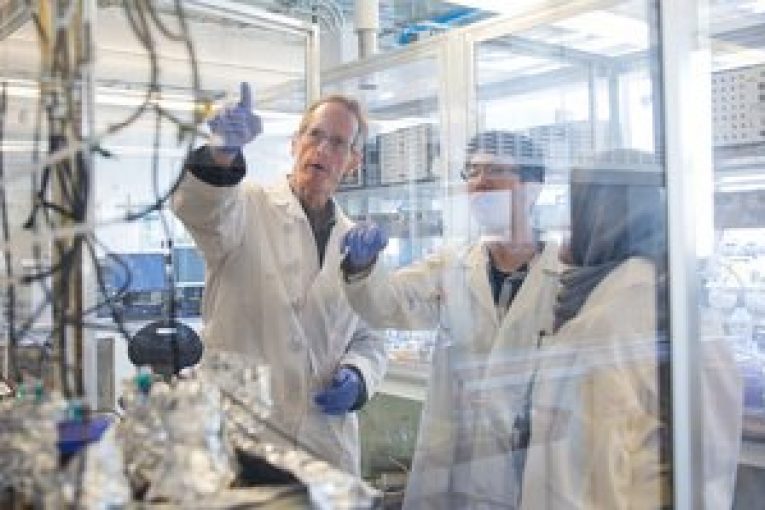
What the difficult mixture of fine clays and water in oilsands tailings ponds could be separated in hours instead of decades? Or even better, what if tailings ponds could be eliminated altogether by separating bitumen, water, and the clay fraction at the processing stage of oilsands mining?
Such a revolution may well be in the cards if Steven Bryant and his team at the University of Calgary can, with the help of oilsands mining operators, successfully demonstrate the use of ionic liquids achieving this on a large scale.
His team has already shown the process works—at the laboratory level—and a patent is pending.
“[Ionic liquids] work in a fundamentally different way than the additives industry is currently using,” says Bryant, Canada Excellence Research Chair in Materials Engineering for Unconventional Oil Reservoirs at the U of C.
Currently some mining operators add a polymer to flocculate the small clay particles to aid in their separation from process water. Ionic fluids, on the other hand, are a type of salt.
“The particular ionic liquids we are using react with what is known as the ionic exchange capacity of the clay minerals themselves. All clays typically have some partly negatively charged anions, and positively charged cations will be attracted to them and actually catch electrostatically to the clay surfaces.”
The result is that the ionic liquids clump the clay particles together so they can be removed rapidly from process water. Solids would go back into mine pits ready for reclamation, and ionic liquids would be recovered and reused.
The technique isn’t restricted to application at existing tailings ponds: ionic liquids could be used to achieve separation right in the processing plant, eliminating the need for settling ponds. Conceivably, the system could fundamentally change the current water-based extraction process.
“We have shown in a beaker that you can, in one step, mix the ionic liquid with the ore,” says Bryant.
The result? Separation into three main constituents: the sand, the fine clay, and the bitumen.
The team is having a series of meetings this summer with various stakeholders including three applicants for remediation of existing ponds. Operator interest is keen, by way of engagement with Canada’s Oil Sands Innovation Alliance (COSIA), which includes all operating oilsands producers.
“We have had positive feedback from all five [mining project owners],” Bryant says.
“That’s where we stand at the moment—there will be an opportunity perhaps in the next few weeks for funding to start scaling up our discovery.”
At this early stage, particular companies haven’t yet committed. COSIA will figure out internally exactly how the group wants to proceed and which companies will be involved.
Bryant admits that moving the technology from beaker to pilot field demonstration will be a significant leap.
“What needs to be done is the iteration between the basics and what a large scale operation might look like,” he explains, adding this includes questions such as the effect of different materials on the ionic fluids.
“We want to speed up that screening.”
Preliminary discussions have been held with two engineering firms in Calgary, Bryant says, but it would be premature to name them at this stage.
“We are nowhere near to optimizing yet and what the process will be.”
At the current pace of progress and interest, however, the team is optimistic:
“We could start work in January,” Bryant says.
You can read more of the news on source
